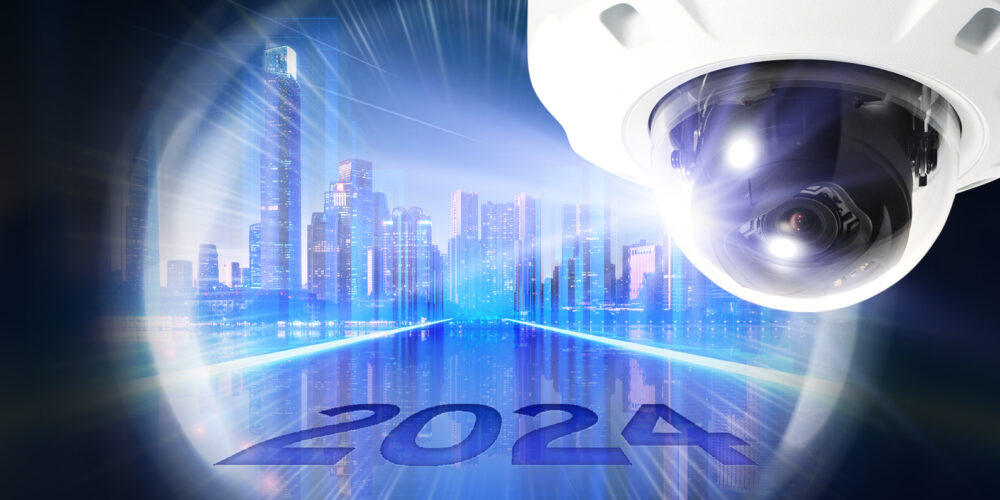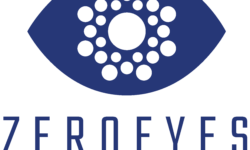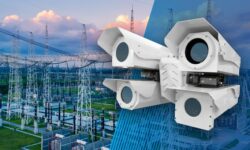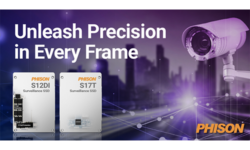Four i-PRO Video Surveillance Trends Predictions for 2024
AI adoption, advances in edge-based processing, scrutiny on closed video surveillance platforms and increased demands for cybersecurity.

Image courtesy of i-PRO
TOKYO, Japan – Video surveillance and public safety professional security solutions provider i-PRO Co., Ltd. (formerly Panasonic security) has shared its top four predictions for the physical security industry in 2024.
Here’s a closer look at each of them and why they could become transformative in the next 12 months:
Customizable AI On-Site Learning Ushers in the Next Level of AI Adoption
2024 will see further increases in AI adoption in the physical security market. While AI-based security cameras have been able to significantly reduce errors by reliably detecting humans and vehicles for some time, the next phase of AI will be irresistible to data hungry businesses.
Today, technology enables integrators and end-users to train a camera’s AI analytic on-site to recognize unique objects that are important for a business to track or count. On-site AI training of edge devices can further enhance accuracy by recognizing logos on vehicles or uniforms, counting planes, forklifts, baby strollers, etc.
This new stream of business intelligence data, harvested directly utilizing edge processing within security cameras, will enable more automated workflows while increasing operational efficiency and enhancing service quality.
AI-based systems will soon be able to detect when people need assistance or notify when a floor is wet to prevent people from slipping for example.
Fast-Changing Tech Demands Scalable, Flexible, Future-Proof Investments
Organizations will be under increased pressure in 2024 to invest in solutions that don’t become obsolete a short time after they are installed, or that limit them through closed platforms. i-PRO advises seeking out vendors and manufacturers with open platforms that collaborate freely with multiple third-party manufacturers.
Equipment should be designed to take advantage of evolutions in AI and analytics without forklift upgrades. By focusing on retrofitting, upgrading, and integrating existing equipment with new technology in a phased approach, companies can maximize the life of existing equipment while also adding new capabilities such as bringing AI to non-AI devices.
More Video Surveillance Power Comes to the Edge
2024 will see even more power come to the edge. Video surveillance cameras with powerful processors will be able to do more edge processing of video data than ever before. Edge devices will soon be able to collaborate and combine their compute resources in ways similar to racks of servers in the cloud today.
This will enable significantly more processing capabilities without overburdening the network and supporting infrastructure. Backend server expense will stay relatively low as more processing of AI-based analytics happens within edge devices like cameras and less video gets streamed back to servers for analysis.
Enhanced edge processing will also make cloud-based systems more efficient and less costly to operate.
Privacy and Cybersecurity Receive Even More Scrutiny
AI and its subsets will receive increased scrutiny next year as executive orders and laws are enacted around the globe to further reduce infringements to privacy and ownership of personal data. The European Parliament’s Artificial Intelligence Act and the U.S. Blueprint for an A.I. Bill of Rights are early examples of a trend that will impact the security industry.
Organizations will need to demonstrate transparency and compliance in the face of legislative changes and best practices that could change quickly. For this reason, it’s crucial to work with vendors and manufacturers that have a proven track record of development with privacy by design and a responsible approach to AI as core tenets.
With so much useful data being harvested with the help of AI, ensuring that private data stays private also requires best-in-class cybersecurity. Video surveillance equipment will need to support evolving standards like NISTs FIPS 140-2 level 3 and the newer 140-3 standard to ensure the security system doesn’t become an attack vector.
Globally, zero trust practices, which validate every transaction between devices and people, are increasingly being required. For example, the White House mandated federal compliance with zero trust architecture and design by 2024.
This federal shift in U.S. policy will have ripple effects on any organization doing business in the US. i-PRO also foresees the U.S. passing a version of the “American Data Privacy and Protection Act”, drafted in 2022, giving some GDPR-like protections to US citizens this year.
“We anticipate a very busy year in 2024 as more companies mandate upgrades and expansions to security systems around the world,” says Hiroshi (Huey) Sekiguchi, chief marketing officer of i-PRO Co., Ltd., in the company announcement.
“With technology changing so quickly, it’s more important than ever to educate the industry about how these exciting technologies can be used to protect assets and generate revenue, all while complying with privacy regulations and cybersecurity best practices,” he says.
If you enjoyed this article and want to receive more valuable industry content like this, click here to sign up for our FREE digital newsletters!

Security Is Our Business, Too
For professionals who recommend, buy and install all types of electronic security equipment, a free subscription to Commercial Integrator + Security Sales & Integration is like having a consultant on call. You’ll find an ideal balance of technology and business coverage, with installation tips and techniques for products and updates on how to add to your bottom line.
A FREE subscription to the top resource for security and integration industry will prove to be invaluable.







